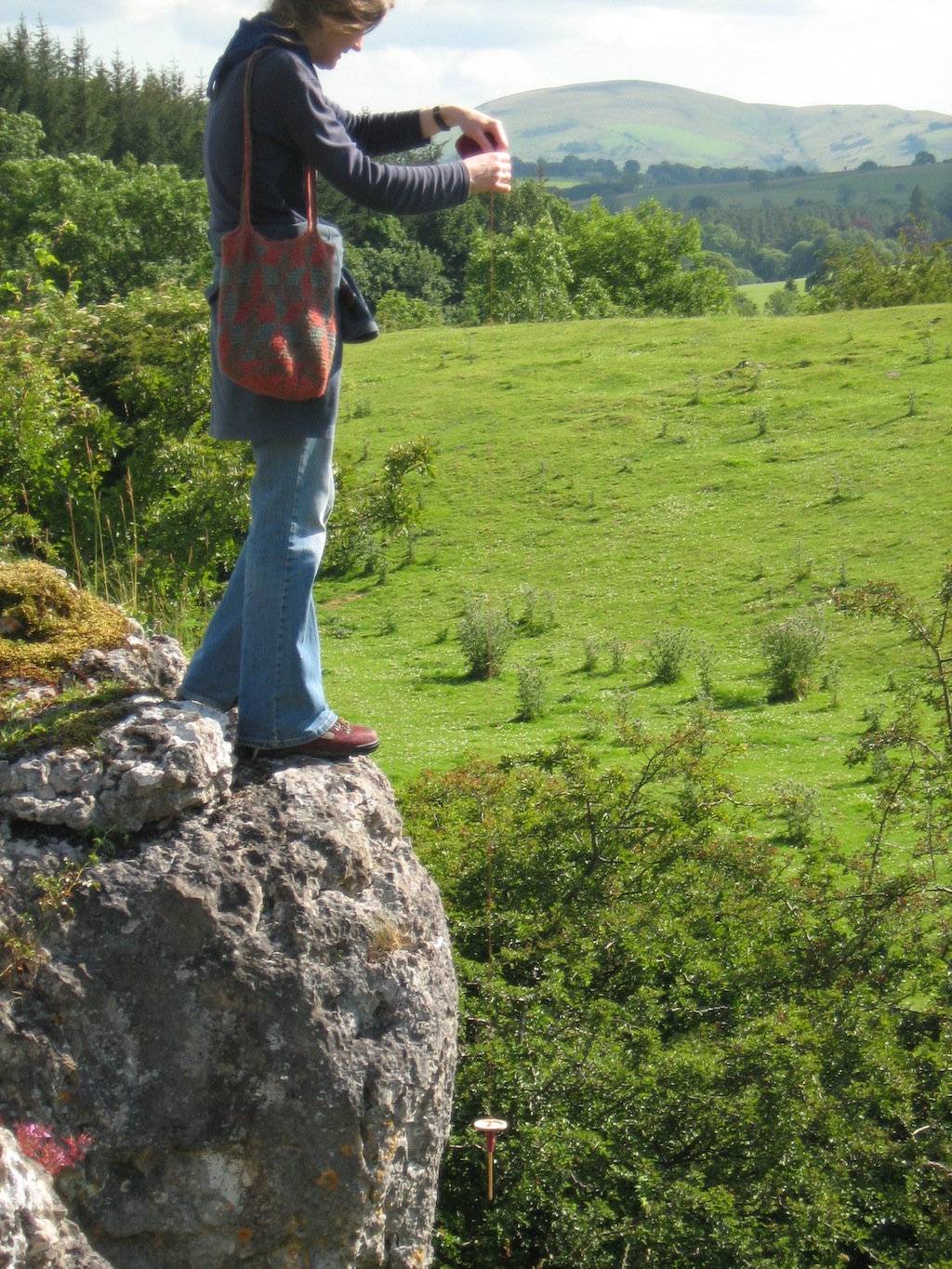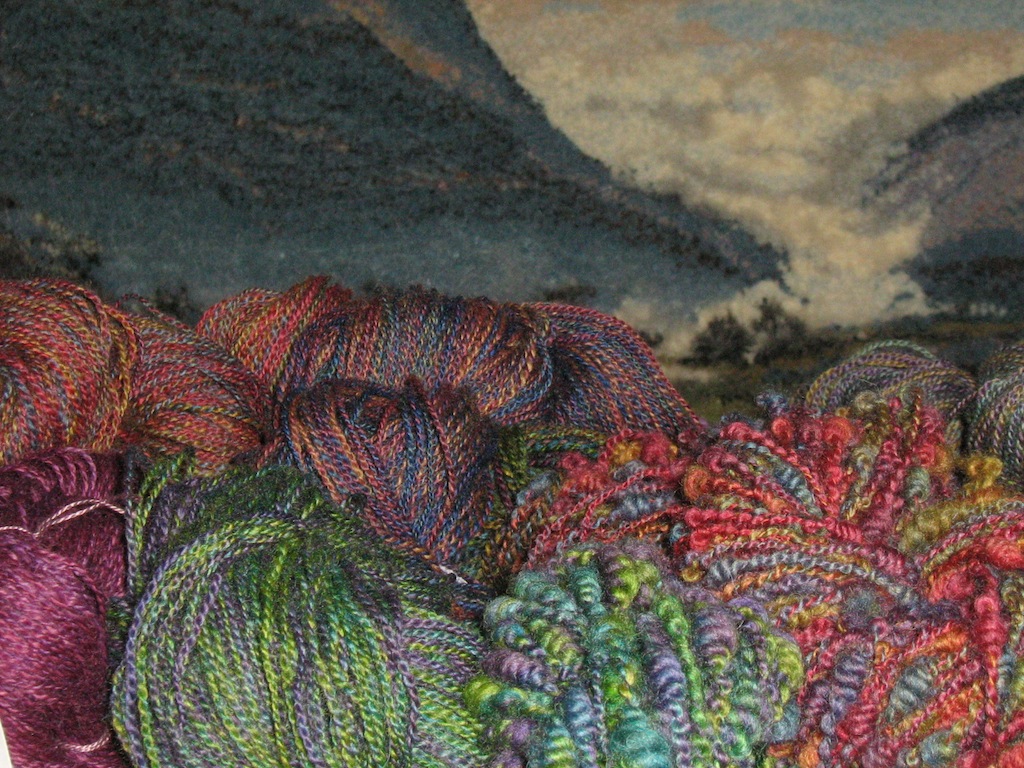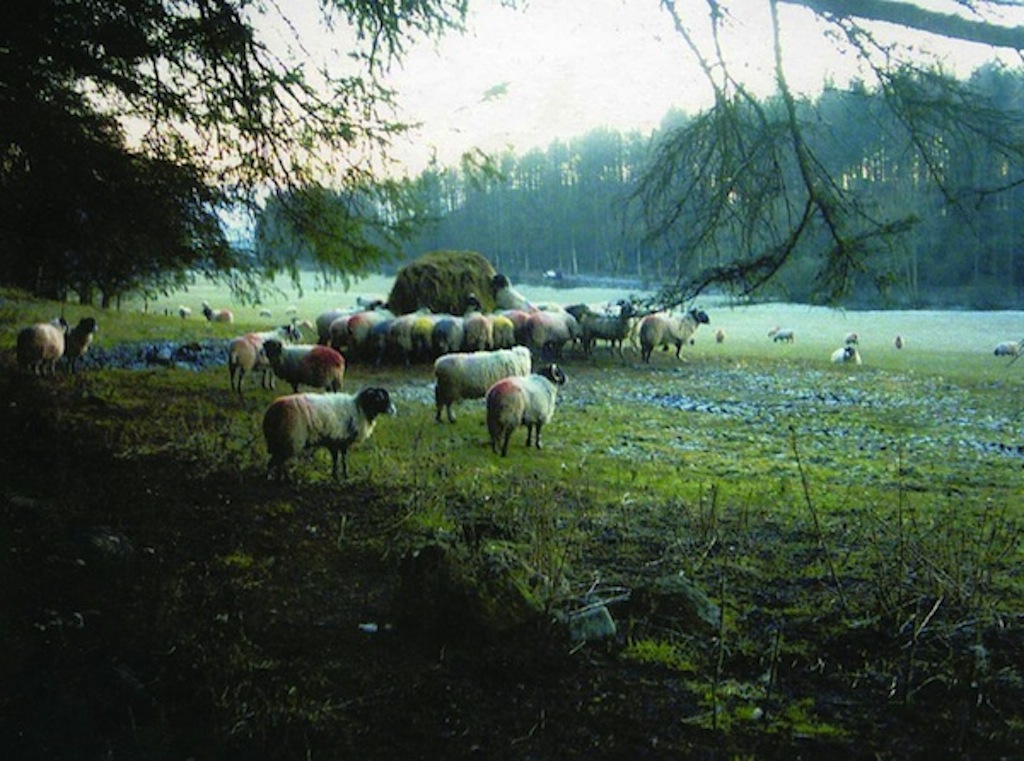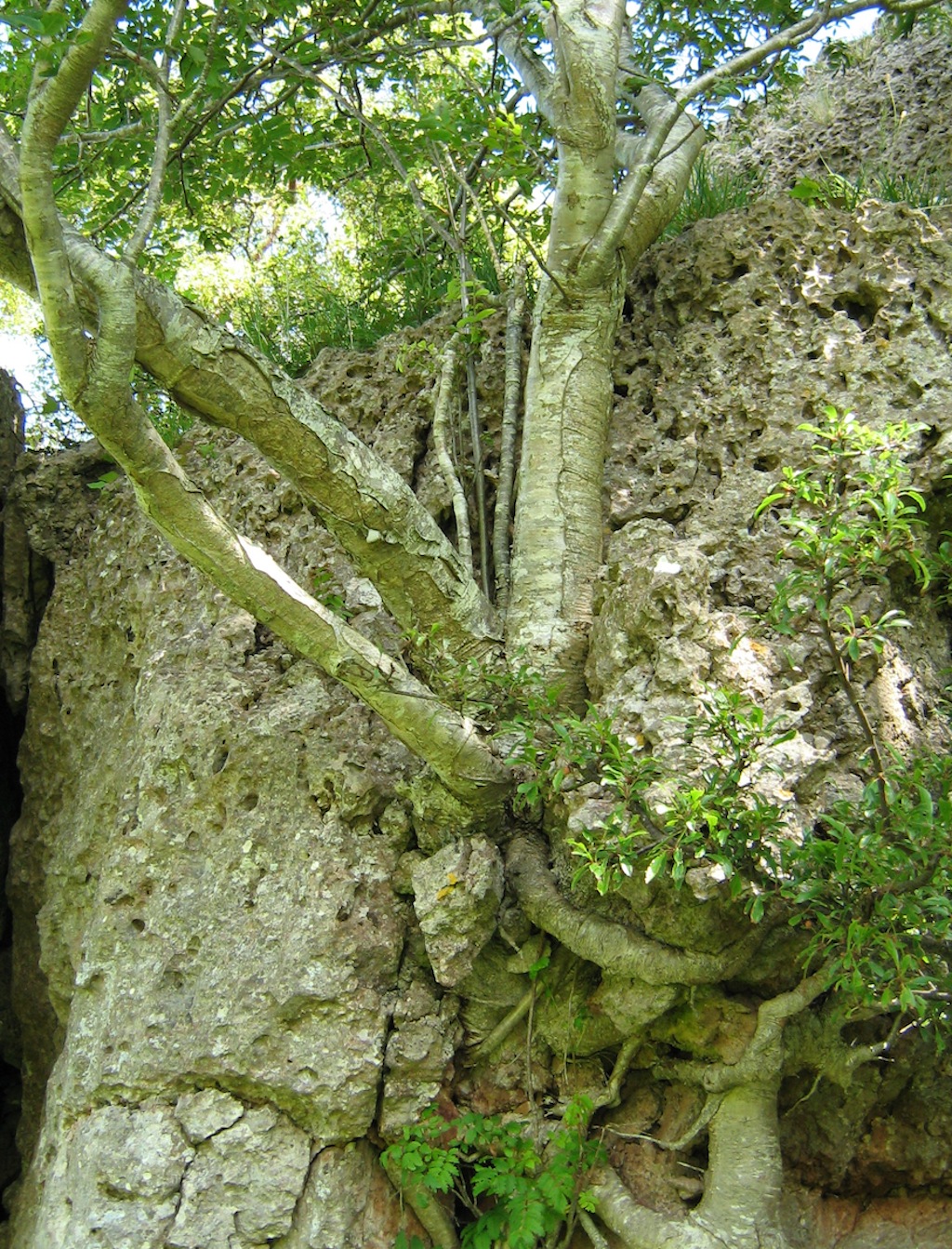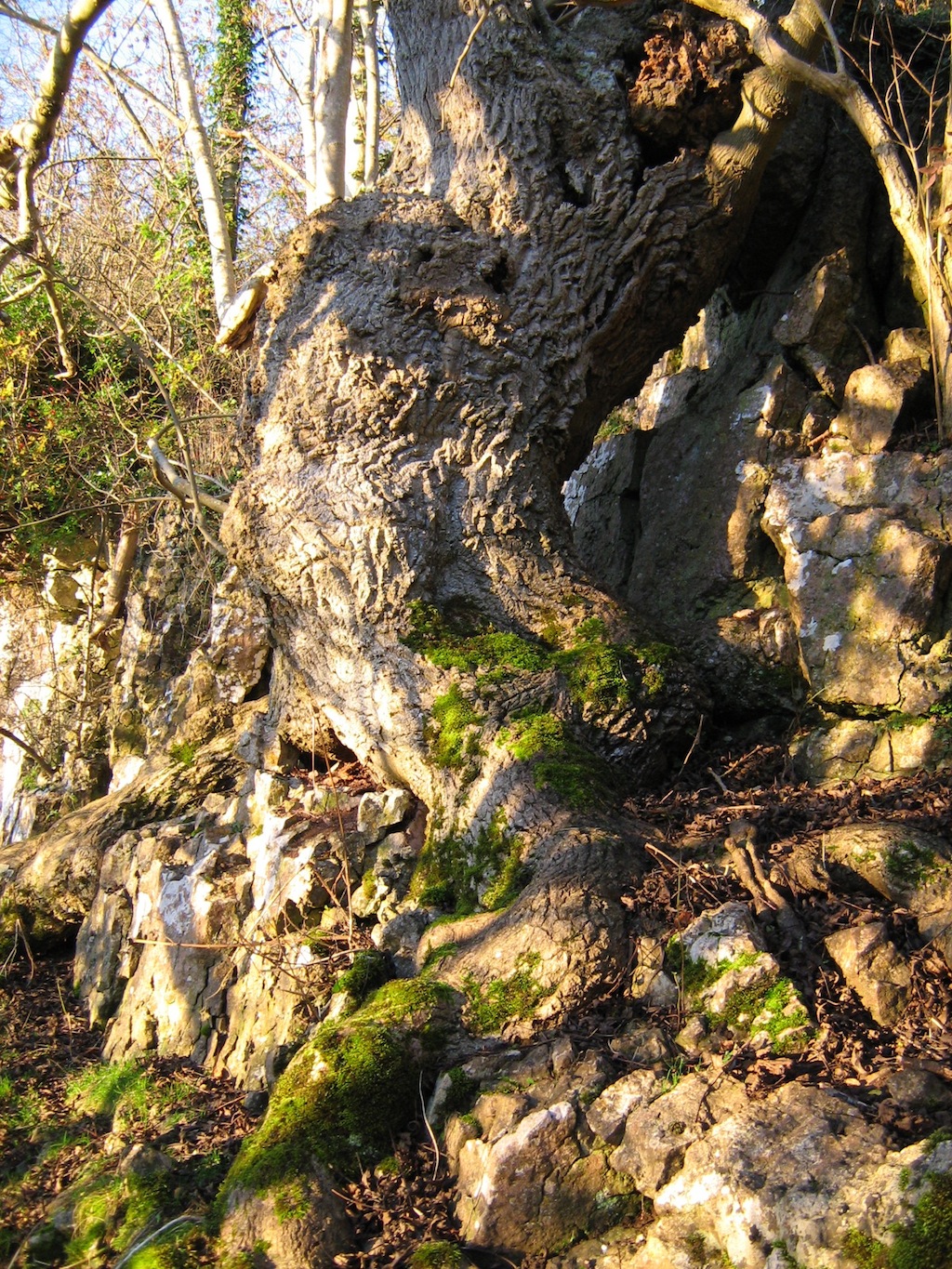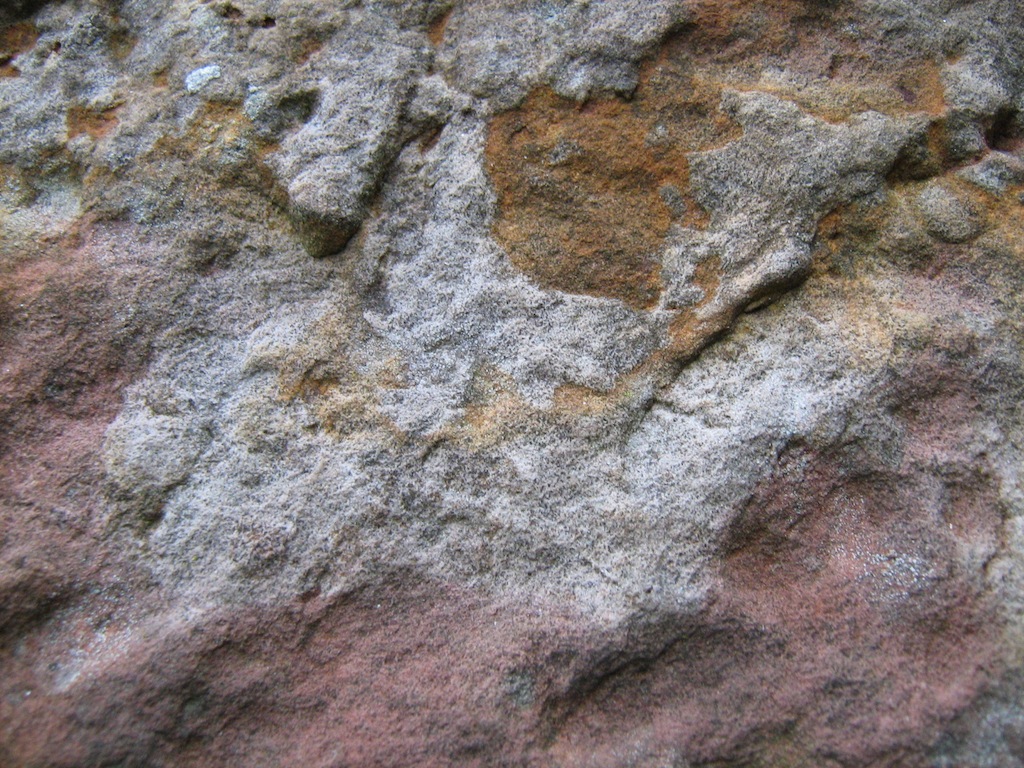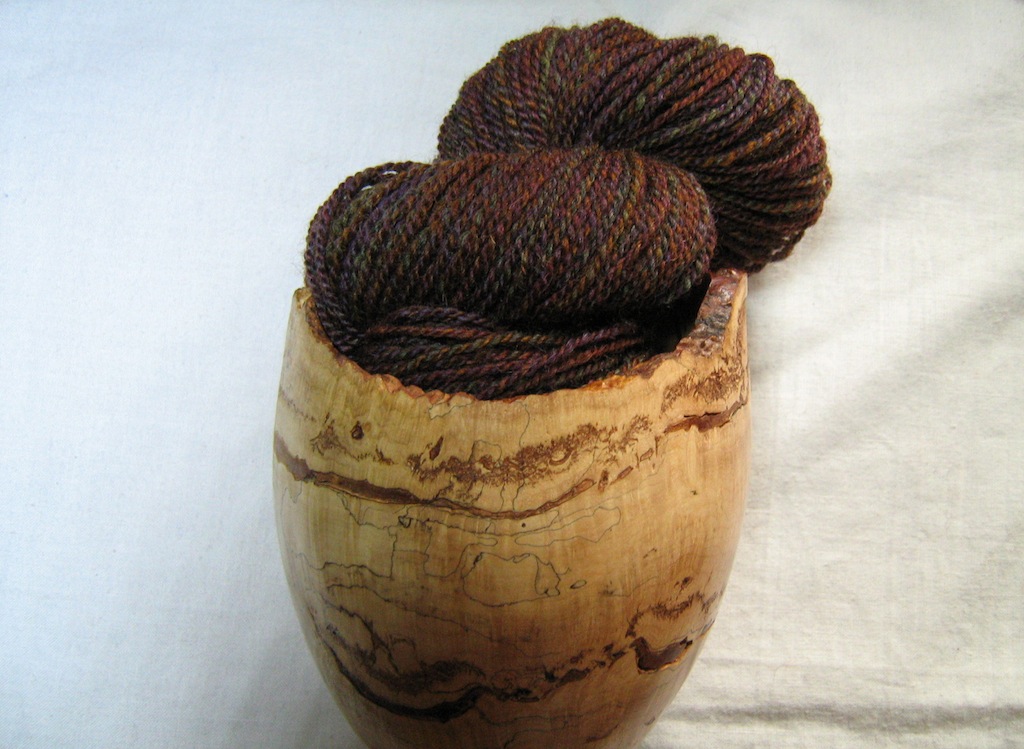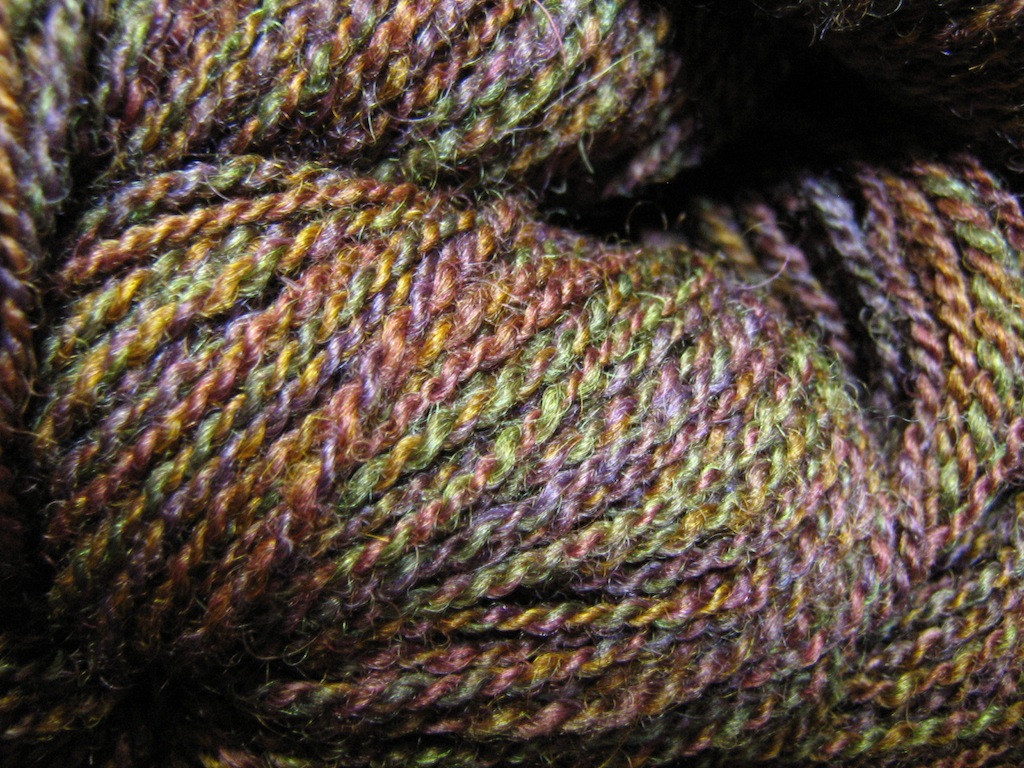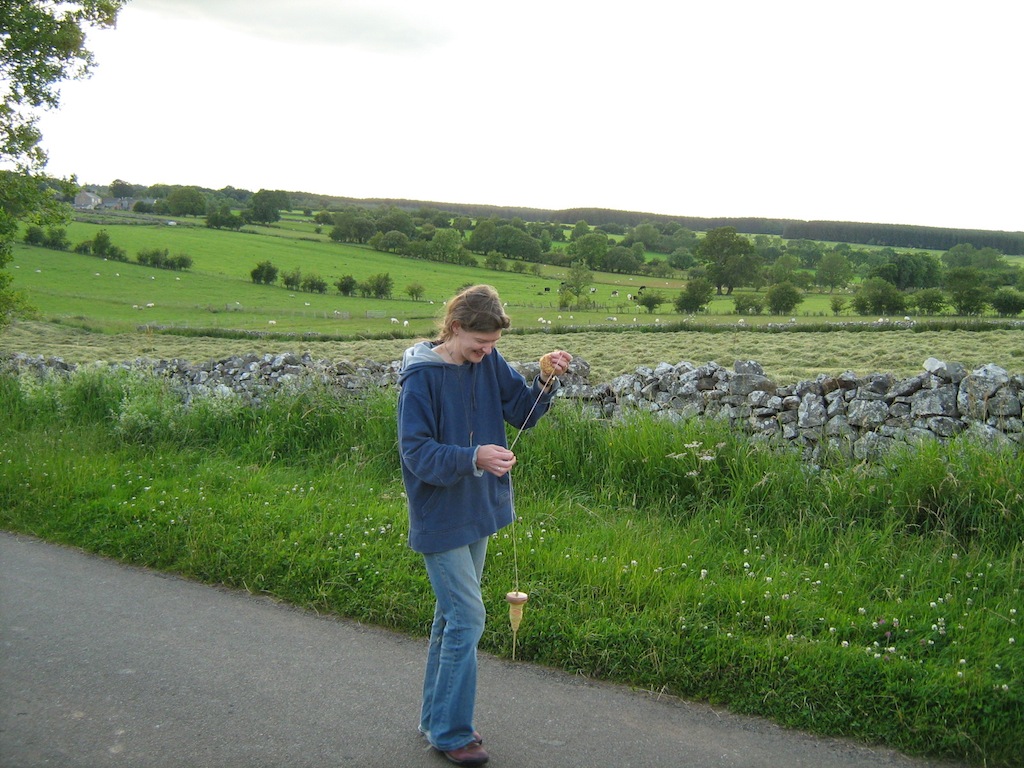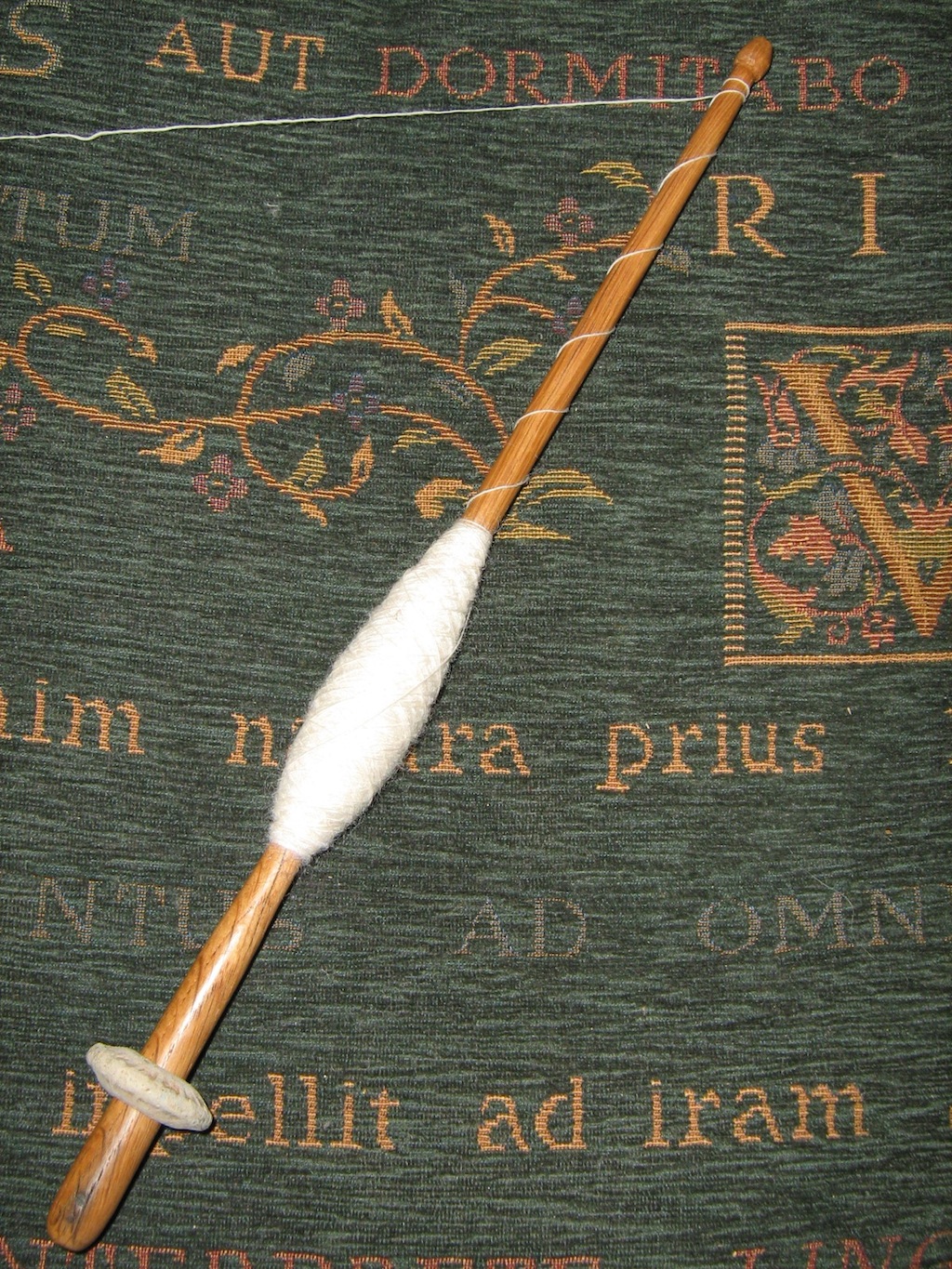Continuing on from our earlier post on Cecilia’s handspinning, here is Part II of our interview, in which Cecilia talks about the relationships between the place where she lives and the yarns that she creates…
4. Could you tell us something about the relationship between your spinning activities and the place where you live?
I live and grew up in the most amazing place in Cumbria, which has had a massive influence on the way in which I view the world and, therefore, on my work. It is perched on a thin, rugged, limestone outcrop with sandstone valleys, crammed between the dramatic landscape of the Lake District’s northern fells a few miles to the west and the rolling farmland of the Eden Valley under the Pennines. The limestone pavements and crags here provide superb herby grazing and shelter for sheep and happen to have some other uses too:
The spindle is plummeting down at the bottom of the picture. This is an excellent way to get plying done quickly!
This landscape has nurtured my obsession with colour and texture, which play such an important role in my yarn. Not the colours of the landscape in its panoramic glory – I can’t resist showing this picture of some of my more vibrant yarn NOT AT ALL reflecting the Lakeland fells in this stunning woollen wall hanging by my Wool Clip colleague, Chris Crofts!
In autumn, such colours do perhaps start appearing:
although I realise this would mean that my yarn most resembles the back-ends of a flock of Swaledale ewes at tupping time….
It is to DETAIL that this landscape forces attention. The coiling roots of ash trees which somehow live within the crags, despite the awesome westerly wind, sending their roots in and out of the rock to reach soil and making decisions about balance with their branches which take decades to perform:
They can so completely merge with the rock that often it is only by touch that one can tell root and rock apart:
The impossibility of defining the colour of our house. This is one stone in the wall:
and each stone is different! When we have clear north-westerly air, heavy with impending rain, the detail in everything can be magnified to such an intensity that it is mesmerising.
I have lived in many places, but it is this extraordinary landscape which has given me a particular way of looking, so that even in the most run-down urban environment or tidy suburban street I can be caught and held by the variety of colour in a few inches of wet pavement or the textures created by weeds curling around broken concrete. It is this idea of detail in colour and texture which I try to capture in my yarn. “Colours per inch” is how I describe it to someone who hasn’t seen it. I’m fascinated by how the yarn can seem to be one colour from a distance – this one (in a gorgeous elm bowl by John Lackie) seems, on the whole, brown from afar and the further you get from it, the browner it becomes:
yet, close up, it reveals all its colours:
Another aspect of this landscape is the way the past is constantly showing through. The yarn I make to sell is of very modern style, but I’m so very often reminded of the oldness of what I do.
Everywhere, the old field systems can be seen. The old road runs parallel to the road now, but in a hollow twelve feet deep, weathered by years of feet and water. The original medieval village was much larger – it is a scheduled monument, although all that remains for the most part are humps in the grass, occasional intriguing bits of stone and weird stuff with the field drains when it rains heavily. It was destroyed or otherwise fell into ruin before it could make it on to any map. A couple of miles in each direction are Roman earthworks, probably staging posts between their network of forts when Cumbria was the front line. A geophysical survey of a neighbour’s garden (because of the drains…) seems to have revealed Iron Age huts. A stone circle existed a few miles to our south, but all that is left of it is the name on a map.
Walking through this landscape with a spindle, it’s impossible not to feel a connection with this past and all the women (and perhaps men too) through time who used to spin here while they went about their work. This is what I do when I’m on my way to fetch some willow branches for my goats from a particularly useful old hedge, which is full of all sorts of good things for livestock to eat and where the villagers surely foraged in the past. I can still spin while carrying the fodder, if the branches are chosen carefully. It is possible to get a great deal of yarn spun in this way, by doing it while doing something else.
The village has an old manor house, where I spent much of my childhood and where my brother lives now. It was originally a medieval pele tower – a square tower surrounded by a high wall into which the whole village and all their animals would pile when they were under threat from raiding parties from over the border (and probably from the neighbours too). Whenever I use my spindle there, I think of the women in the past also spinning their wool, sometimes, I imagine, while they were anxiously wondering what was going on while the men fought off the raiders outside and whether their homes were safe, but I imagine them in peaceful times too, while going about their daily tasks. I wonder if they used to ply their yarn from the crags.
An old spindle whorl, possible Roman. There was a great Roman camp not far away – the people who live there now find spindle whorls when they’re digging their potatoes.
All content © Cecilia Hewett and produced especially for WOVEMBER. Do check back later this evening for further woolly riches!
